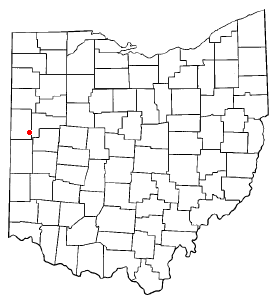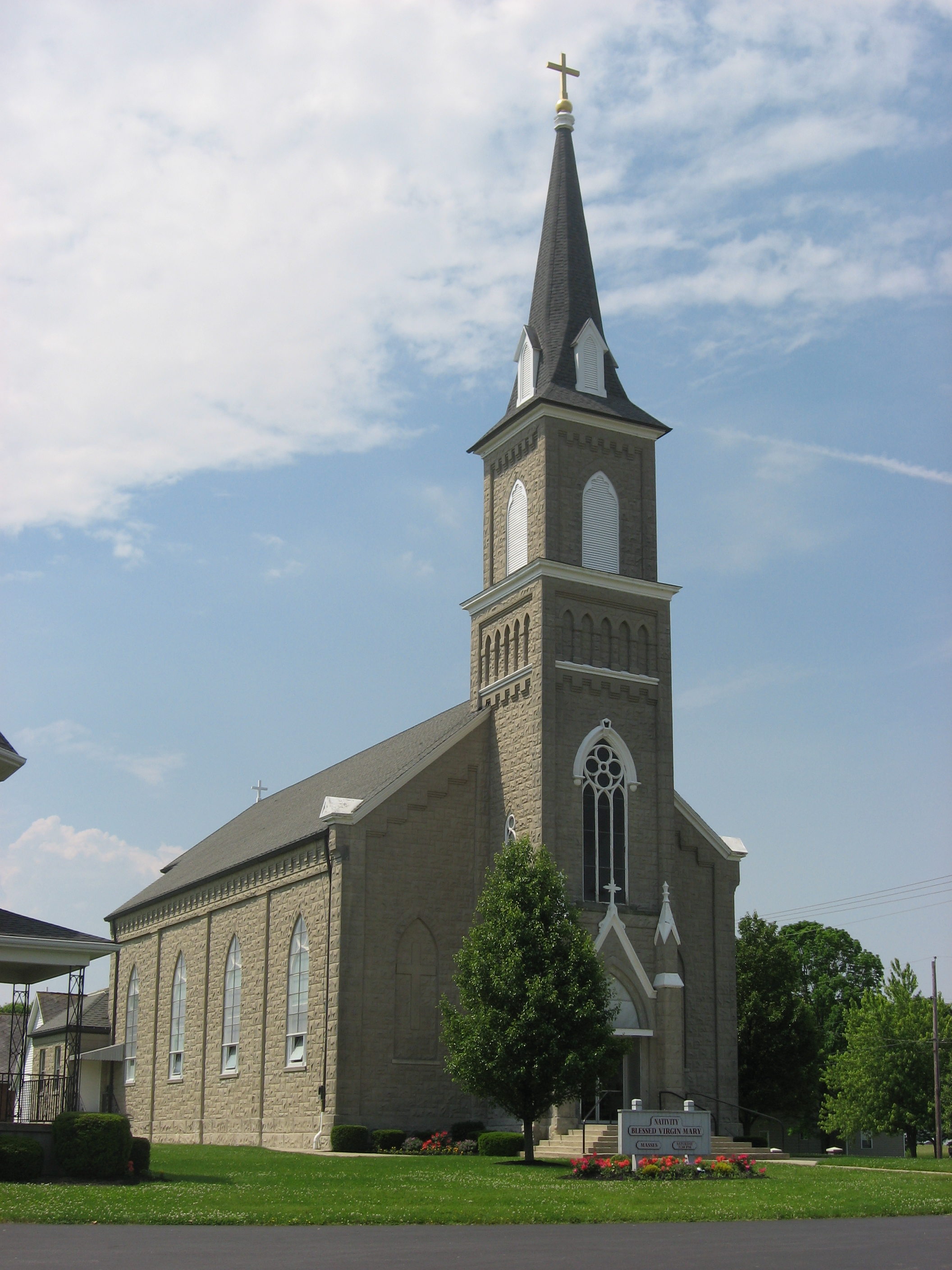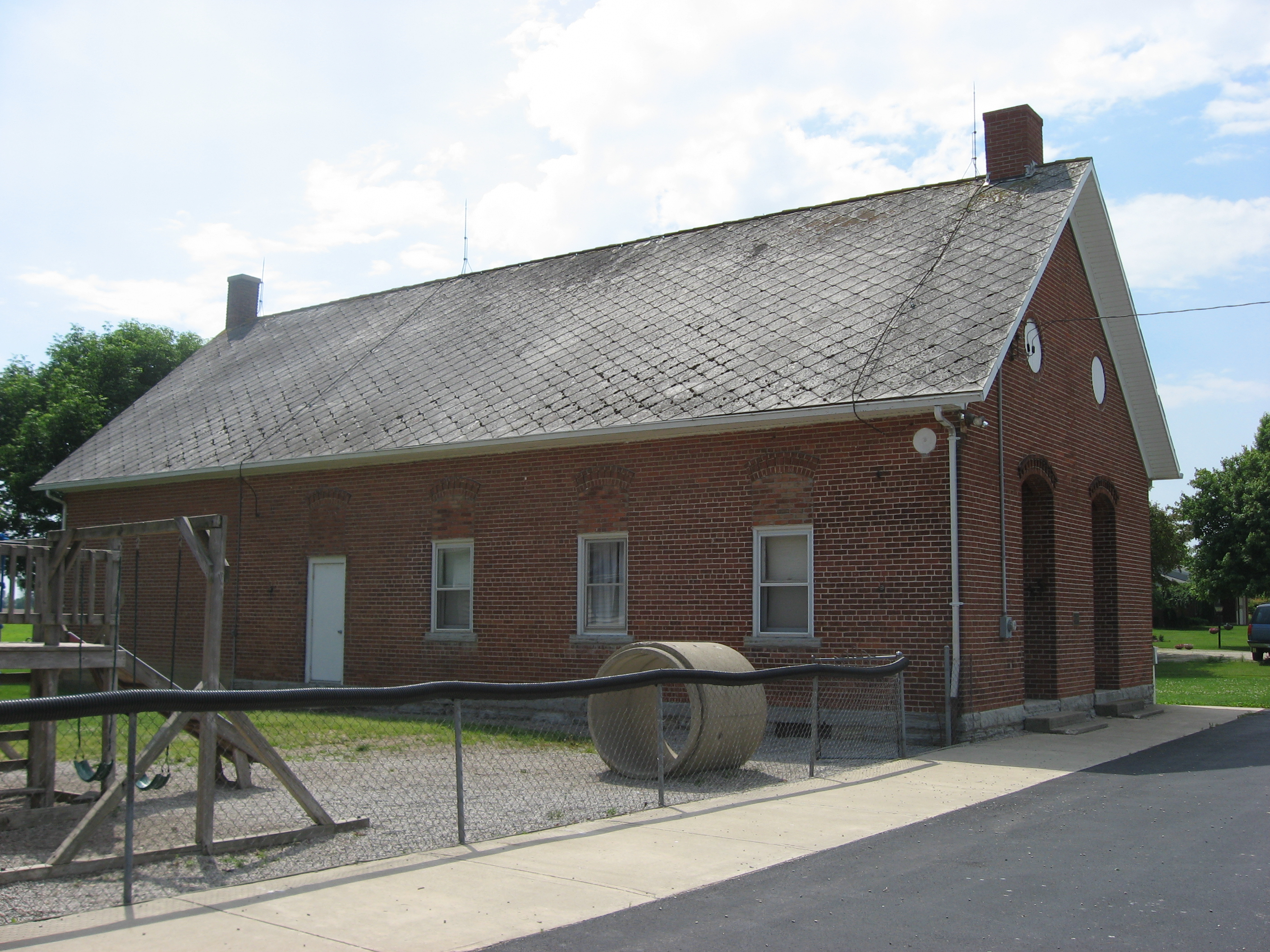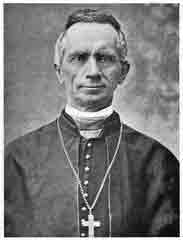|
St. Sebastian's Catholic Church (Sebastian, Ohio)
St. Sebastian's Catholic Church is a historic Roman Catholic church in Marion Township, Mercer County, Ohio, United States. Located in the unincorporated community of Sebastian, it is the home of an active congregation and has been declared a historic site because of its well-preserved early twentieth-century Gothic Revival architecture. Parish history Dedicated to third-century martyr Saint Sebastian, the parish was established in 1852 from territory that had been part of St. Rose and St. John the Baptist parishes. By the end of the following year, its members constructed a church building that would serve the parish for twenty-five years;Scranton, S.S. ''History of Mercer County, Ohio and Representative Citizens''. Chicago: Biographical, 1907, 230. a frame structure, it was built under the direction of an African American man named Coratus.Brown, Mary Ann. ''Ohio Historic Inventory Nomination: St. Sebastian Catholic Church''. Ohio Historical Society, February 1977. This ... [...More Info...] [...Related Items...] OR: [Wikipedia] [Google] [Baidu] |
Sebastian, Ohio
Sebastian (also St. Sebastian) is an unincorporated community in northern Marion Township, Mercer County, Ohio, United States.DeLorme. ''Ohio Atlas & Gazetteer''. 7th ed. Yarmouth: DeLorme, 2004, 54. . Its elevation is 932 feet (284 m), and it is located at (40.4442136, -84.5166205). Located at the intersection of Sebastian Road and County Road 716-A,Brown, Mary Ann. ''Ohio Historic Inventory Nomination: St. Sebastian Catholic Church''. Ohio Historical Society, February 1977. the community lies south of the city of Celina, the county seat of Mercer County, and nearly northwest of the village of Chickasaw. By far the most significant building in the community is St. Sebastian's Catholic Church, located at the intersection of the two roads. Built in 1904, it is the parish's third building, erected to replace a church destroyed by fire. There are almost no buildings in Sebastian other than the church, which appears from a distance to be alone in the countrys ... [...More Info...] [...Related Items...] OR: [Wikipedia] [Google] [Baidu] |
Pipe Organ
The pipe organ is a musical instrument that produces sound by driving pressurized air (called ''wind'') through the organ pipes selected from a keyboard. Because each pipe produces a single pitch, the pipes are provided in sets called ''ranks'', each of which has a common timbre and volume throughout the keyboard compass. Most organs have many ranks of pipes of differing timbre, pitch, and volume that the player can employ singly or in combination through the use of controls called stops. A pipe organ has one or more keyboards (called '' manuals'') played by the hands, and a pedal clavier played by the feet; each keyboard controls its own division, or group of stops. The keyboard(s), pedalboard, and stops are housed in the organ's ''console''. The organ's continuous supply of wind allows it to sustain notes for as long as the corresponding keys are pressed, unlike the piano and harpsichord whose sound begins to dissipate immediately after a key is depressed. The smallest po ... [...More Info...] [...Related Items...] OR: [Wikipedia] [Google] [Baidu] |
Maria Stein, Ohio
Maria Stein (German, literally Mary's stone or "Mary of the Rock") is an unincorporated community in central Marion Township, Mercer County, Ohio, United States. The community and the Maria Stein Convent lie at the center of the area known as the Land of the Cross-Tipped Churches, where a missionary priest, Father Francis de Sales Brunner, established a number of parishes for German Catholics. Notable features Situated in southern Mercer County, Maria Stein is a rural farming community with a history dating to the early 19th century. The residents of the community and its surrounding region, nicknamed the "Land of the Cross-Tipped Churches", have largely German Catholic roots. It was settled in the early 19th century by immigrants from Germany who cleared the dense forests of the region and uncovered a rich and productive farmland. Multi-generation families have prospered through their management of the rich, dark soil of the region. In the character of small communities, ... [...More Info...] [...Related Items...] OR: [Wikipedia] [Google] [Baidu] |
Cassella, Ohio
Cassella is an unincorporated community in Marion Township, Mercer County, Ohio, United States. Located at (40.4061581, -84.5521770), it lies at an elevation of 955 feet (291 m). Situated at the intersection of State Route 119 and Cassella-Montezuma Road in western Marion Township, it lies in the headwaters of Beaver Creek to the south of the city of Celina,DeLorme. ''Ohio Atlas & Gazetteer''. 7th ed. Yarmouth: DeLorme, 2004, 54. . the county seat of Mercer County. Other nearby communities include Maria Stein, to the east, Carthagena, to the north, and St. Henry, to the west. Cassella lies in the Land of the Cross-Tipped Churches, a heavily Roman Catholic region of rural far western Ohio that centers on Maria Stein. It grew up around the Nativity of the Blessed Virgin Mary Catholic Church, which was founded in 1847 and built its present building in 1858. The community's name is derived from the church, which was a mission in its earliest years; the ... [...More Info...] [...Related Items...] OR: [Wikipedia] [Google] [Baidu] |
Nativity Of The Blessed Virgin Mary Catholic Church
The Nativity of the Blessed Virgin Mary Catholic Church is a historic Catholic church in Cassella, an unincorporated community in Mercer County, Ohio, United States. One of several Catholic churches in Marion Township,Brown, Mary Ann. ''Ohio Historic Inventory Nomination: Cassella Catholic Church''. Ohio Historical Society, February 1977. it has been designated a historic site because of its well-preserved nineteenth-century architecture. Parish history Founded in 1847,Fortin, Roger. Faith and Action: A History of the Archdiocese of Cincinnati 1821-1996''. Columbus: Ohio State UP, 2002. Nativity parish was served from its earliest years by itinerant priests of the Society of the Precious Blood.Scranton, S.S. ''History of Mercer County, Ohio and Representative Citizens''. Chicago: Biographical, 1907. Soon after the parish's formation, a small frame church building was erected on the northeastern corner of the intersection of what is now Cassella-Montezuma Road and State ... [...More Info...] [...Related Items...] OR: [Wikipedia] [Google] [Baidu] |
Roman Catholic Archdiocese Of Cincinnati
The Archdiocese of Cincinnati ( la, Archidiœcesis Cincinnatensis) is a Latin Church ecclesiastical jurisdiction or archdiocese that covers the southwest region of the U.S. state of Ohio, including the greater Cincinnati and Dayton metropolitan areas. The Archbishop of Cincinnati is Dennis Marion Schnurr. The Archdiocese of Cincinnati is the metropolitan see of its province, with five suffragan dioceses. Geography In total, the Archdiocese of Cincinnati encompasses 230 parishes in 19 counties, , with the total membership of baptized Catholics around 500,000. The archdiocese administers 110 associated parochial schools and diocesan elementary schools. The mother church is the Cathedral Basilica of St. Peter in Chains, located at the corner of 8th and Plum Streets in Downtown Cincinnati. Cincinnati is the ''metropolis'' of the Ecclesiastical Province of Cincinnati, which encompasses the entire state of Ohio and is composed of the archdiocese and its five suffragan dioceses: Cleve ... [...More Info...] [...Related Items...] OR: [Wikipedia] [Google] [Baidu] |
National Park Service
The National Park Service (NPS) is an agency of the United States federal government within the U.S. Department of the Interior that manages all national parks, most national monuments, and other natural, historical, and recreational properties with various title designations. The U.S. Congress created the agency on August 25, 1916, through the National Park Service Organic Act. It is headquartered in Washington, D.C., within the main headquarters of the Department of the Interior. The NPS employs approximately 20,000 people in 423 individual units covering over 85 million acres in all 50 states, the District of Columbia, and US territories. As of 2019, they had more than 279,000 volunteers. The agency is charged with a dual role of preserving the ecological and historical integrity of the places entrusted to its management while also making them available and accessible for public use and enjoyment. History Yellowstone National Park was created as the first national par ... [...More Info...] [...Related Items...] OR: [Wikipedia] [Google] [Baidu] |
Missionaries Of The Precious Blood
The Missionaries of the Precious Blood ( la, Congregatio Missionariorum Pretiosissimi Sanguinis) is a Catholic community of priests and brothers. The society was founded by Saint Gaspar del Bufalo in 1815. The Missionaries of the Precious Blood is a shortened English translation of the Latin ''"Congregatio Missionariorum Pretiosissimi Sanguinis Domini Nostri Jesu Christi,"'' (The Congregation of Missionaries of the Most Precious Blood of Our Lord Jesus Christ). Priests and brothers add the nominal letters C.PP.S. after their names to indicate their membership in the Congregation. It is a Society of Apostolic Life composed of secular priests and brothers who live in community. Members do not take vows but are held together by the bond of charity only and by a promise of "fidelity to the Congregation of Missionaries of the Precious Blood in accordance with its Constitution and Statutes, giving hemselvesentirely to the service of God". (see the formula of incorporation foun ... [...More Info...] [...Related Items...] OR: [Wikipedia] [Google] [Baidu] |
Precious Blood Catholic Church (Chickasaw, Ohio)
Precious Blood Catholic Church is a Roman Catholic parish in Chickasaw, Ohio, United States. Erected in 1903 and still an active parish, the church historically owned two buildings constructed in its early years that have been designated as historic sites. Early parish history Chickasaw's first Catholics attended Mass at St. Sebastian's Church,Scranton, S.S. ''History of Mercer County, Ohio and Representative Citizens''. Chicago: Biographical, 1907, 239. nearly to the northwest. In 1897, the Chickasaw members erected a small church in their village for use as a chapel of ease during the week. Because the villagers typically did not own horses, they found it difficult to reach St. Sebastian's, and sympathy grew for attempting to form their own parish; accordingly, in January 1903, the parishioners from Chickasaw left the church and took their possessions with them. Little more than one week later, St. Sebastian's was destroyed by a fire (now seen as highly suspiciousBrown, Mary ... [...More Info...] [...Related Items...] OR: [Wikipedia] [Google] [Baidu] |
William Henry Elder
William Henry Elder (March 22, 1819 – October 31, 1904) was an American prelate of the Catholic Church. He served as bishop of the Diocese of Natchez in Mississippi from 1857 to 1880 and as archbishop of the Archdiocese of Cincinnati in Ohio between 1883 and his death. Biography Early life and education William Elder was born in Baltimore, Maryland, on March 22, 1819. His father, Basil Elder, was a descendant of William Elder (1681–1714), a Catholic immigrant from England to Maryland (United States) in colonial times. His grandfather was Thomas Elder, husband of Elizabeth Spalding, thus making William a first cousin once removed of Catherine Spalding, co-founder of the Sisters of Charity of Nazareth. His mother was Elisabeth Miles (née Snowden) Elder. In 1831 Elder entered Mount St. Mary's College, in Emmitsburg, Maryland. Elder graduated in 1837 and entered the seminary. In 1842, he was sent to the Pontifical Urban College in Rome, where he received the degree of Doctor ... [...More Info...] [...Related Items...] OR: [Wikipedia] [Google] [Baidu] |
Chapel Of Ease
A chapel of ease (or chapel-of-ease) is a church architecture, church building other than the parish church, built within the bounds of a parish for the attendance of those who cannot reach the parish church conveniently. Often a chapel of ease is deliberately built as such, being more accessible to some parishioners than the main church. Such a chapel may exist, for example, when a parish covers several dispersed villages, or a central village together with its satellite hamlet (place), hamlet or hamlets. In such a case the parish church will be in the main settlement, with one or more chapels of ease in the subordinate village(s) and/or hamlet(s). An example is the chapel belonging to All_Hallows_Church,_South_River, All Hallows' Parish in Maryland, US; the chapel was built in Davidsonville, Maryland, Davidsonville from 1860 to 1865 because the parish's "Brick Church" in South River was too far away at distant. A more extreme example is the Chapel-of-Ease built in 1818 on St ... [...More Info...] [...Related Items...] OR: [Wikipedia] [Google] [Baidu] |
Church Hall
A church hall or parish hall is a room or building associated with a church, generally for community and charitable use. '''', , July 2001. In smaller and village communities, it is often a separate building near the church, while on more restricted urban sites it may be in the basement or a wing of the main church building. Activities in the hall are not necessarily religious, but parts of |










